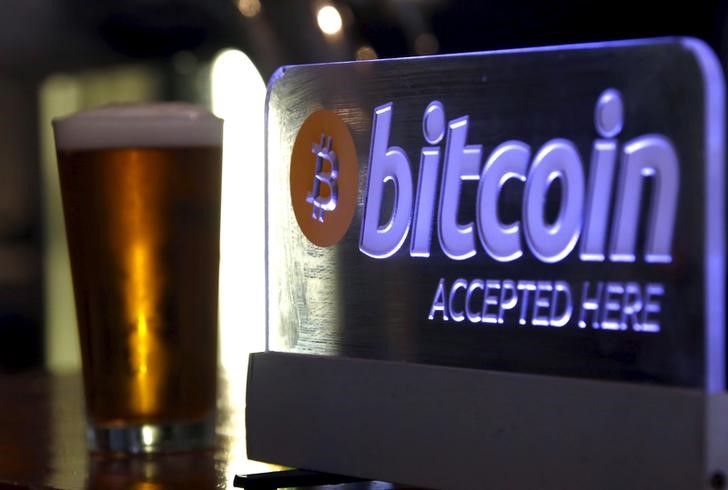Benzinga - The old ways and new ways of managing one’s money are merging. As stablecoins and pegged digital currencies gain traction, it’s becoming a challenge to separate the two financial systems. With e-commerce sales projected to reach $6.3 trillion by 2023, and over 70% of people banking online, there's no denying the digital shift in our everyday traditional transactions.
The Case For Cryptocurrencies It would be logical to think that cryptocurrencies, which represented a $1.5 trillion market as of 2021 and have shown consistent growth, would be at the forefront of this financial evolution. The mobility offered by digital assets is unparalleled. As digital nomads become more common, the limitations of traditional cross-border transactions become more evident. Cryptocurrencies offer a borderless financial system unhindered by country-specific regulations, exchange rates, or bureaucratic red tape.
Decentralized finance is also more inclusive. Due to geographic or socio-economic constraints, millions worldwide lack access to traditional banking. Cryptocurrencies, present a pathway to financial inclusion.
Despite these trends, a European Central Bank study shows that 60% of European consumers still prefer traditional financing systems. Traditional banking holds a strong influence, and not without reason.
Digital assets face notorious volatility, limited usability for routine payments, accessibility issues for crypto wallets and dApps, and susceptibility to market manipulation: think orchestrated pump-and-dump schemes and how influencers like Elon Musk can shift market sentiments with a single tweet.
Stablecoins, Closing The Gap Unlike highly volatile cryptocurrencies, stablecoins are pegged to a stable asset, such as a fiat currency. It gives them inherent stability, making stablecoins an ideal bridge between the digital and traditional realms.
DeFi platforms harness stablecoins to offer various financial services like lending, borrowing, or insurance without traditional intermediaries. This way, they promote smoother, faster, and often more economical transactions, creating a competitive alternative to conventional financial mechanisms. If widely adopted, stablecoins could become systemic components of the global financial infrastructure, bridging the gap between traditional finance (TradFi) and decentralized finance (DeFi). Ensuring that they are adequately regulated helps mitigate potential risks and elevates trust in these digital assets, fostering wider adoption.
CBDCs: The New Kid On The Block With the rise of Central Bank Digital Currencies (CBDC), reminiscent of stablecoins, the overlap between traditional and decentralized finance is growing further still.
Central Bank Digital Currencies represent a fascinating convergence of traditional and digital finance. In many ways, they mirror stablecoins, being digital forms of a nation's fiat currency. As nations like China or the EU advance their CBDC projects, the dialog between TradFi and DeFi intensifies.
CBDCs could function alongside stablecoins, serving as government-sanctioned digital currencies that leverage the benefits of blockchain while ensuring the trust and stability associated with central banks.
Decentralization, Illusion, And Governance Industry experts and crypto enthusiasts hail DeFi for its potential to decentralize financial services, but it's vital to recognize that achieving complete decentralization presents a challenge.
Although DeFi intends to provide financial services without intermediaries, centralization nuances still exist. The need for governance, combined with the natural inclination of blockchain consensus methods to concentrate authority, results in what some critics call a "decentralization illusion."
While this presents challenges, it's essential to acknowledge that the inherent governance mechanisms within DeFi could be beneficial. They might serve as platforms where public policy can find its foothold, ensuring a blend of innovation and stability.
Remaining Challenges, Upcoming Shift While stablecoins and DeFi show enormous potential, they still face challenges like regulatory uncertainties, infrastructure readiness, and public perception. The "decentralization illusion" arises from the need for centralized governance in many projects, and blockchain consensus models can centralize authority. However, DeFi's inherent governance mechanisms can bridge the gap, leading to mainstream acceptance.
With technology advancing, clearer regulations, more merchant adoption, and increasing public awareness, we see signs of a shift. European Union neobanks focused on Web3 technologies are a testament to this trend, offering comprehensive financial platforms for digital asset adoption.
As traditional and decentralized finance blend together, I expect a rise in hybrid financial models, opening new investment opportunities and promoting financial inclusivity. This evolution may pave the way for a new 'gold standard' in digital form. Looking ahead, stakeholders must stay vigilant and adaptable, as the next decade may witness the birth of a robustly decentralized yet stable finance ecosystem.
© 2023 Benzinga.com. Benzinga does not provide investment advice. All rights reserved.
